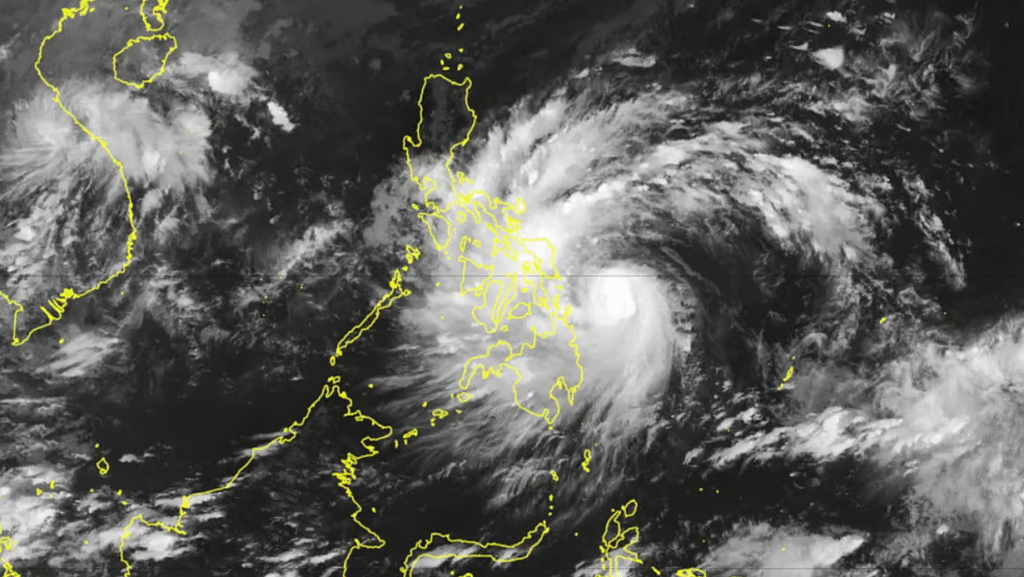How to Protect Your Remote Team When Disaster Strikes
The Philippines has faced an unprecedented series of natural disasters recently, from the earthquakes in October to typhoons and floods in November.
For Australian businesses relying on offshore Filipino virtual assistants, these back-to-back events highlight the urgent need for strategies that support remote teams during disasters.
At Advice2Talent, we’ve been actively refining our support systems and policies to ensure our VAs are safe, cared for, and able to continue working whenever and wherever disaster strikes.
In this article, we’ll explain practical ways to protect your remote team, including understanding calamity leave, preparing workflows, and maintaining productivity during emergencies.
Why Disaster Support Matters for Remote Teams
The Philippines faces an average of 20 typhoons a year and sits on the Pacific Ring of Fire, making earthquakes, storms, and floods a regular reality for remote workers.
These events can instantly disrupt home offices, power supply, and internet connectivity—bringing work to a halt if businesses aren’t prepared.
Supporting your team during emergencies is about more than compliance; it’s about building trust, resilience, and loyalty.
When staff feel genuinely cared for, they return to work faster, communicate more proactively, and maintain strong performance even under pressure.
For Australian businesses, proactive disaster support ensures steady operations, protects deliverables, and strengthens long-term relationships with offshore teams.
Insight
Not all disasters are massive storms or earthquakes. Even severe localized floods, landslides, or volcanic activity can trigger a state of calamity, making calamity leave relevant for a wide range of emergencies.
How to Prepare Your Remote Team Before a Disaster Happens
Preparation is the cornerstone of supporting remote teams during disasters. By anticipating challenges, businesses can minimize disruption, protect people, and maintain productivity even when unexpected events occur.
Thoughtful planning ensures your team knows what to do, feels supported, and can continue contributing safely.
1 - Create a Clear Disaster Communication Plan

A clear, well-documented communication plan ensures everyone knows how to stay in touch during emergencies. Include:
- Multiple backup channels such as Messenger, SMS, Viber, or WhatsApp in case one system is down.
- A hierarchy of contacts, specifying who to notify first and in what situations.
- Guidelines on reporting updates: emphasize that safety comes first, and work-related updates are secondary until it’s safe. Regularly review and practice the plan so it becomes second nature to the team.
2 - Encourage Emergency Readiness at Home
Empowering team members to prepare their own homes reduces stress and downtime when disaster strikes. Encourage them to have:
- Charged power banks and backup devices to maintain communication if electricity is out.
- Mobile data plans or alternative internet solutions for continuity.
- Emergency contact numbers for family, local authorities, and teammates.
- A basic home safety kit, including first aid, food, water, and essential documents.
Small steps like these can make a significant difference in their ability to stay safe and stay connected.
3. Build Flexible Work Policies for Disaster-Prone Periods
Demonstrating flexibility shows empathy and protects both wellbeing and business continuity. Businesses can:
- Offer flexible deadlines or temporary schedule adjustments during high-risk periods.
- Assign alternative tasks that don’t require full internet connectivity or immediate availability.
- Encourage employees to log progress in ways that accommodate disruption without compromising accountability.
Flexibility reduces pressure and builds trust, allowing teams to focus on safety first without worrying about falling behind.
4 - Use Cloud-Based Tools for Business Continuity
Centralized systems ensure work can continue even if local devices, offices, or internet connections are disrupted. Best practices include:
- Storing documents in cloud platforms that can be accessed from anywhere.
- Using collaboration tools that track progress and updates without relying on a single device.
- Regularly backing up critical data to prevent loss during unexpected events.
Cloud-based solutions allow teams to quickly resume work once conditions stabilize, minimizing downtime and operational disruption.
Implementing these proactive measures, businesses empower their remote teams to prioritize safety while maintaining continuity.
Preparation not only reduces the impact of disasters but also strengthens trust, resilience, and confidence within the team.
Supporting Your Team During the Disaster
When a disaster strikes, immediate priorities should be safety, clear communication, and flexibility.
Prioritize Wellbeing
If employees are evacuating, securing homes, or supporting family, work cannot be the first concern. Show genuine care.
Check In Without Pressure
A simple “Are you safe?” can be more effective than asking about work tasks.
Offer Leave Options When Needed
Depending on the situation, employees may need:
- Calamity leave (for government-declared disasters)
- Emergency leave (for urgent personal or household crises)
- Temporary paid flexibility or grace periods
Provide Support Through Your EOR or Staffing Partner
A strong offshore partner does more than manage paperwork—they step in when your team needs real support.
At Advice2Talent, we’ve been actively assisting VAs across the Philippines through the recent earthquakes, typhoons, and flooding, ensuring both safety and continuity.
We provide verified updates, guidance on leave entitlements, and HR support to help teams navigate disruptions smoothly. When situations escalate, we also offer fully funded, practical assistance, including:
Hotel accommodations at no cost to the VA
Alternative workspace arrangements
Direct coordination with clients to manage expectations
Help with documentation and emergency leave processing
Our mission is simple: to reduce stress during emergencies and make sure your remote team feels protected, supported, and never left on their own.
Keeping Offshore Teams Safe Through Calamity Leave
Calamity leave is a legal framework in the Philippines that allows employees, including virtual assistants, to take time off when a state of calamity is declared.
Recent disasters—like the October earthquakes in Cebu and November typhoons—highlight how crucial this protection is.
In practice, private companies aren’t required to pay employees who cannot report to work during a calamity, following the Department of Labor and Employment’s (DOLE) “no work, no pay” principle.
However, offering calamity leave—paid or otherwise—demonstrates fairness, strengthens trust, and supports long-term engagement with your remote team.
Benefits of calamity leave include:
Allows employees to focus on safety and recovery without worrying about pay or job security.
Reduces workflow disruption by formalizing leave and communicating expectations.
Supports long-term trust and engagement with offshore teams.
By providing clear calamity leave policies, you give your team the space to stay safe and begin recovery—laying the groundwork for a smoother return to work once the immediate danger has passed.
Insight
Companies can consider combining clear leave policies with flexible remote work arrangements. Allowing virtual assistants to temporarily adjust schedules during recovery periods reduces stress and improves long-term performance.
Helping Your Remote Team Recover After a Disaster
Recovery doesn’t end when the immediate danger passes. Supporting remote teams during disasters means providing ongoing assistance to restore both personal and professional stability.
By showing empathy, offering resources, and adjusting expectations, businesses can help their teams return to productivity safely and confidently.
Provide Realistic Timelines for Return
After a disaster, employees may face challenges beyond work, such as damaged homes, disrupted utilities, or unsafe transportation.
Give your team the time they need to restore electricity, repair property, and secure a safe workspace before expecting full productivity.
Setting realistic timelines reduces stress and prevents rushed decisions that could compromise both safety and work quality.
Offer Mental and Emotional Support
Disasters can take a heavy emotional toll. Remote workers may feel anxious, overwhelmed, or uncertain about the future.
Encourage regular breaks, lighter task assignments, and open communication channels for staff to express concerns.
Consider providing access to counseling resources or wellness programs to help employees process their experiences while maintaining engagement with work.
Reassess Workload and Expectations
Returning to full workloads immediately can be counterproductive. Reevaluate priorities, postpone non-urgent tasks, and focus on essential deliverables first.
When you provide a phased approach to work, employees can regain momentum without feeling pressured or falling behind.
Clear communication about expectations helps rebuild confidence and ensures teams remain productive without compromising wellbeing.
Supporting your remote team in this way not only helps them recover more effectively but also strengthens loyalty, trust, and long-term resilience—key components of a high-performing offshore workforce.
How Businesses Benefit from a Strong Disaster Support System
Proactively supporting remote teams during disasters delivers long-term advantages:
- Higher employee retention and loyalty
- Stronger company culture built on trust and empathy
- Fewer workflow interruptions during emergencies
- Better alignment across distributed teams
- A reputation for being a reliable, humane employer
Your team will remember how you treated them in their most challenging moments—this trust translates into higher performance, engagement, and dedication.
Building a Resilient Remote Workforce
Supporting remote teams during disasters isn’t just about policy. We know firsthand how teams that feel genuinely supported return to work quickly, maintain high performance, and communicate proactively.
Australian businesses that invest in disaster preparedness, flexible workflows, and employee wellbeing ensure that their offshore teams remain confident, productive, and engaged—even in the face of back-to-back disasters like the ones the Philippines recently endured.
At Advice2Talent, our mission is to help you build a resilient remote workforce that thrives under any circumstances, with clear policies, structured support, and a culture of care.
Get In Touch
- Contact Details
Address :
1167 Burke Road Kew VIC 3101
Priv 2, 6th Floor, Mabuhay Tower Cebu IT Park, Jose Maria del Mar St., Lahug, Apas, Cebu City, Cebu
Number : 0412 740 090
Number : 03 8518 6690
Email : hello@advice2talent.com
- Working Hours
Monday to Friday: 9.00 AM – 5.00 PM
Saturday & Sunday: Closed
- Follow Us







